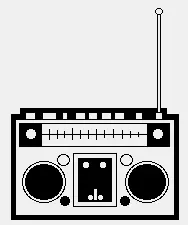- 183 Posts
- 229 Comments
 12·25 days ago
12·25 days agoAsshole designs are meant to annoy customers one way or another.
No they’re not. Annoyance is /incidental/, and only if discovered. And in the event of discovery, annoyance in itself works counter to supplier’s profit interests. But when the exploit yields higher profit than the loss due to annoyed customers, we have an asshole design that persists in the marketplace.
Printing dots is deliberate from governments to track anyone who uses such a product.
Citation needed. Plz cite relevant law. And then explain how printers /without/ tracker dots get away with it.
It could be a bit crappy though,
The difference between crappy design and asshole design is intent. You don’t accidently implement tracker dots.
but people don’t care if they buy that kind of product.
Speak for yourself. Edward Snowden has a good quote w.r.t those who don’t care about privacy take a selfish stance in light of others who need privacy. And those who don’t care about free speech because they have nothing interesting to say. That’s not to say others are not due their rights.
I personally care in all situations where a product or service /that I pay for/ works against me. Products and services I buy should serve me, not adversaries and not work against me.
If you really cared, you would have bought a black and white laser printer instead.
I did better than that. I pulled a black printer out of the dumpster. So I am not subject to tracker dots and I also avoid supporting the industry financially. Of course I still have to use public printers to print color pages.
I disagree. It’s about the intent and result IMHO.
Result is effect. That’s not disagreement.
Intent is to spy (not crappy even if I disagree with it)
There are multiple profit-driven intents for the manufacturer’s decision. “Spying” is not one of them, unless you can show that the maker is getting paid when the gov subpoenas data. The intent is inherent in all ways the printer maker profits from the move, like selling more ink.
and result is insignifiant since people still buy those printers.
That is actually what makes the result signficant. The more printers purchased, the more people get exploited.
 1·25 days ago
1·25 days agoTracking dots have never been about print quality or cost though.
It’s about the effect. The motivation is only relevant insofar as determining whether it’s an asshole design or a crappy design. The design is:
- deliberate (not a matter of incompetence)
- anti-consumer (anti-privacy, non-transparent, costs consumers more for negative value in return)
- voluntary (not mandated by law)
Therefore it is an asshole design.
What do you mean “about print quality”? What something is “about” depends on whose perspective you have in mind. Of course it’s about print quality if you are printing artwork for a blacklit rave venue, when the blacklight makes the yellow dots appear and ruin the art.
Of course yellow ink has a cost. Color inks generally cost more than black inks. The cost of all ink sold in this way is quite high due to other asshole designs. When you cannot print black docs because you’re out of yellow ink (so the printer maker can tag your doc with metadata), who do you think pays for that?
Even if you don’t care about quality or price personally, how would this design cease to be an asshole design?
indeed that’s what I do. Lurch does not (b/c they are “so 90s”).
 21·25 days ago
21·25 days agoIt’s a criminal offense to posses equipment that can counterfeit banknotes.
I’ll have a look at that directive¹ when I get a chance but I have to wonder if it’s then illegal to write your own FOSS f/w for a printer which has no proactive measures – which you would need to do in order to escape the tyranny of manufacturer ink shenanigans and anti-features.
The quality of most consumer printers is insufficient for counterfiets to begin with, but most certainly they aren’t going to handle the holograms.
¹ strange that it would be a directive considering the EU has exclusive competency over the euro.
(update)Unless you are doing scientific analysis, it’s hard to find much less measure. You know it’s there, print a ‘blank’ page take a picture and upload an image of the dots.
The dots show up easily under a blacklight or blue LED. Which means if you are creating artwork for a blacklit party venue, the noise ruins the artwork.
Update
I had a look at EU Directive 2014/62. This seems to be the relavent bit:
Article 3 - Offences
- Member States shall take the necessary measures to ensure that the following conduct is punishable as a criminal offence, when committed intentionally:
(a) any fraudulent making or altering of currency, whatever means are employed;
(b) the fraudulent uttering of counterfeit currency;
© the import, export, transport, receiving or obtaining of counterfeit currency with a view to uttering the same and with knowledge that it is counterfeit;
(d) the fraudulent making, receiving, obtaining or possession of
(i) instruments, articles, computer programs and data, and any other means peculiarly adapted for the counterfeiting or altering of currency; or
(ii) security features, such as holograms, watermarks or other components of currency which serve to protect against counterfeiting.
I do not interpret anything there as requiring printer makers to pro-actively produce tracker dots.
Note the law thread is here.
- Member States shall take the necessary measures to ensure that the following conduct is punishable as a criminal offence, when committed intentionally:
 21·26 days ago
21·26 days agoI’m not providing a source - this was all well-known by the mid-90’s,
The citation needed is not for what you’ve said here, but for the claim that ALL printers do it without exceptions, despite lack of regulations requiring them to do so.
some of us were there and experimented to try to get around it.
Did you witness any Oki printers using stego? Note Oki printers are no longer on the US market, but when they were I regarded them as the most ethical of all options. To date I’ve seen no one catch Oki doing stego.
 25·26 days ago
25·26 days agoEvery manufactured color imaging device does this.
Citation needed. (edit: I’ve only seen hand-waving speculation that “they all do it”. Oki and Samsung printers have not been caught AFAIK, so I would like to see something concrete on those)
Printers got good enough a long time ago that you could make realistic money from them.
Try printing a note euro . It either won’t or it will mess it up.
These statements are contradictory. I have heard of the limitation of printers deliberately refusing to reproduce colors that exactly match that of currency. Is that a hoax? If not, then there is no need for stego.
I would love to have a printer that can create holograms.
It doesn’t affect print quality.
It does, obviously. You have unintended noise in the printout.
How do you communicate with your government? Electronically? When your gov outsources their email to Microsoft or Google and they provide no public key, and the only non-electronic means of communication is to a postal address, do you lick boots by sending data in-the-clear via the recipient’s MitM of choice?
How do you do your anonymous whistle blowing when you cannot control the recipient’s means of communication?

 1·26 days ago
1·26 days agoI’m not sure why you would regard black dots as invisible.
The EFF warned that no printers are safe (or something to that effect), as they gave up on the project to document the models with tracker dots. I suppose the question is: have any black laser printers been concretely identified as having tracker dots?
In any case, I think mono printers are safer simply because there is no legit cover story for that surveillance. So if someone gets caught doing something naughty, there would be a more reluctance to use the evidence if it reveals mono printers are compromised. A mono printer maker would have no defense for their anti-consumer design.

 1·28 days ago
1·28 days agoWhat I found most astonishing is that a scanner picked up the tiny yellow dots. They mention the model of printer (Xerox Docucolor) but not the scanner. The NSA logo looks like a low-res scan yet it must have been a quite high-res scan to get the tracker dots, I would think.

 1·29 days ago
1·29 days agoI would of course frame some poor sucker by using their color Canon printer. I think all the Canons have the yellow tracker dots.
Otherwise a black Samsung or Oki would perhaps be safest.
BTW, why do you mention laser printers specifically? AFAIK the trackers are generally with yellow pigment, and most laser printers are not color.
 1·1 month ago
1·1 month agoWas your email verified? I’m confused because github never sent me anything by email after that step, and passkey being the highest security possible, your scenario should not happen.
MS does not get my IP address. I ensure every single login is over Tor. MS makes sure ~97% of logins require plaintext email 2FA. On a few very rare occasions over the past several years, I was able to login without the email bullshit. Maybe once per year I got lucky like that (which is perhaps comparable to the odds of getting a fresh new exit node that MS does not know about). I thought I was getting that shitty treatment for being on Tor but some non-Tor users told me they have to do the email verify every time as well, so I figured it was imposed on everyone not just Tor users.
 2·1 month ago
2·1 month agoPasskeys and/or 2FA.
It’s unclear what you mean. I have my username and passkey (1FA). I did not setup any kind of 2FA (I have nothing I care to protect on their shit site), but MS imposes email verification as a forced-2FA.
But I agree that a token in one email is insecure.
Not at all. Security policy is designed for a purpose. You can never have absolute security. You can only have something that is secure enough for a task and for the assets under protection in light of threat risks. The token via email was OVERLY secure in the case at hand – and as a consequence security was lost (specifically, availability was lost, which is part of security).
Anyway ure Codeberg next time.
Impossible to use Codeberg to submit a bug report or comment on existing bug reports that are MS Github hosted. I would never voluntarily use MS Github for any project that I control.
I only use GH to collaborate on other people’s projects. And even then, I simply do not report many bugs because I cannot be bothered to dance for Microsoft and deal with their garbage. But now it looks like I will not be reporting /any/ bugs to any GH projects.
BTW, it’s bizarre that you suggest using Codeberg just after saying email-based 2FA is “insecure”. Codeberg allows 1FA (and rightfully so).

 2·2 months ago
2·2 months agoThanks. I’ll have a look at some of those approaches.
(edit) I used a feature in the KOMAscript pkg to produce circles that reach the edge of the paper. I also used one of the approaches in your link to create a frame at the point where the /expected/ boundary is, so that if the frame has any missing lines it would indicate where the specs may be wrong. But I must say I don’t trust LaTeX to produce an accurate frame because some lines are closer to the edge than others even though I asked for 4.2mm on all sides.

 2·2 months ago
2·2 months agoThe staff at the shop I use the most did not know. But the self-service printers are different than the printers used by the staff. They might know for the printers they use, which is naturally more costly.
Creating something with symbols going all the way to edge seems like a good idea. I would not want any spacing between the symbols though, so I guess it would be non-trivial code.

 1·2 months ago
1·2 months agoI could flood the page with color, then place a white box on top of that that covers all but 20mm around the border knowing that the unprintable region would not be bigger than that.
What I had in mind was many lines terminating at many positions around the border, each line marked with how much gap it leaves. Then the first line to not go as far as the others would be the penultimate one. Your idea sounds a lot easier. But ideally the ideas could be combined if the doc were to be published for many to use for that purpose.
Art.3 has this definition:
(5)‘audiovisual media services’ means services as defined in point (a) of Article 1(1) of Directive 2010/13/EU;
which leads to:
- For the purposes of this Directive, the following definitions shall apply: (a) ‘audiovisual media service’ means: (i) a service as defined by Articles 56 and 57 of the Treaty on the Functioning of the European Union which is under the editorial responsibility of a media service provider and the principal purpose of which is the provision of programmes, in order to inform, entertain or educate, to the general public by electronic communications networks within the meaning of point (a) of Article 2 of Directive 2002/21/EC. Such an audiovisual media service is either a television broadcast as defined in point (e) of this paragraph or an on-demand audiovisual media service as defined in point (g) of this paragraph;
(ii) audiovisual commercial communication;
(e) ‘television broadcasting’ or ‘television broadcast’ (i.e. a linear audiovisual media service) means an audiovisual media service provided by a media service provider for simultaneous viewing of programmes on the basis of a programme schedule;
https://eur-lex.europa.eu/eli/dir/2010/13/oj/eng
So perhaps not… though strictly speaking audiovisual ≠ ‘audiovisual media service’, so it’s left undefined. Perhaps one could argue that DAB has JPEG album art and therefore delivers both.
Note as well that the spirit of the accessibility law is to push suppliers to provide information and access in multiple different formats so that some impaired demographics are not unnecessarily excluded.

 1·3 months ago
1·3 months agoMy version is older than 120.
It’s very repeatable, so exit node would not be at issue. I guess the user agent string is being rejected.

 1·3 months ago
1·3 months agoI’ve seen it consistently fail using ungoogled chromium over tor. But when I just now tried Firefox over tor, no issue. I know that U/C is fussy about timing, but the response time seems quick when I use firefox, so I don’t think it’s a problem of lagging.
 1·3 months ago
1·3 months agoI am not really satisfied with any radio receiver because none of them attach to the LAN as a server. I got a bit spoiled with a terrestrial broadcast TV tuner that attaches to ethernet and is compatible with MythTV, which is an open source DVR. It pulls the schedules from the air (thus requires no Internet), and gives you way to prioritise programs you want recorded. It’s great in particular for unplugged folks. It even cuts out commercials – if there are any… none where I use it.
Radio has nothing comparable. But it is somewhat cool that some DAB radios have an LCD that shows album art and text info like the track and program that is playing, and time and date set automatically by the air waves.
Moderates
- US Law (local/state/federal) ⚖

- Open Data 📖📡
- Smartphone Required 📱(digital exclusion of people without smartphones)
- Email Required (digital exclusion of people without email) 📧
- Collection of stories about useful scraper robots 🤖
- E-mail providers and tools (for ad surveillance rebels/resistors) 📧
- Digital Fiefdom (aka walled-garden) Required 🏰
- Boycotts✊📣
- Public resource but access restricted 🚫 and ⛔ exclusive
- CAPTCHA required
- Am I Alone?


To prove motivation that supports your bizarre claim. The printers are not made by the government. They are made by a profit-driven corporation. You described a government motivation for an action taken by a private enterprise. That makes no sense¹ – unless you can find a law that compels the tracking. In which case the law would be the motivation, not the tracking.
¹(edit: caveat: assuming a non-communist regime. Of course if the companies are gov owned and controlled, then your claim is feasible. Are you in China? Note that Xerox, Canon, and HP are not HQd in China)
For profit.
By extension: Profit = fun for the shareholders
How are you failing to grasp that the printer business is actually a distraction from the ink and toner business? The printer is just the mechanism by which they exploit the sale of consumables. They hope to fool consumers like yourself into thinking the transaction is about the printer, not the consumables. The marketing has worked wonders on you but some consumers (most?) see more clearly that it’s all about selling ink at 10+ times its cost.
update: printer ink costs as much as ~$12,000 per gallon, 6× more than human blood. So of course printer makers are happy scatter yellow ink all over every page of every black document that gets printed. It cheats consumers out of 100s of thousands of dollars, if not millions.
From another source: